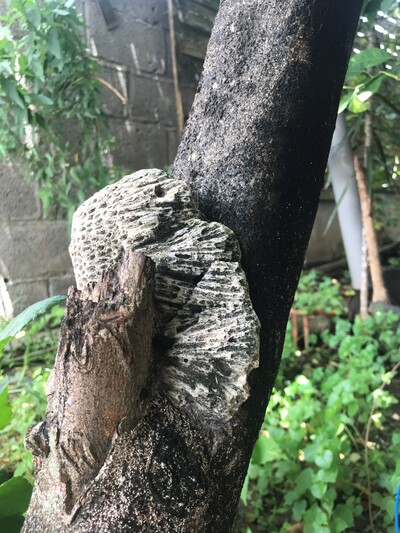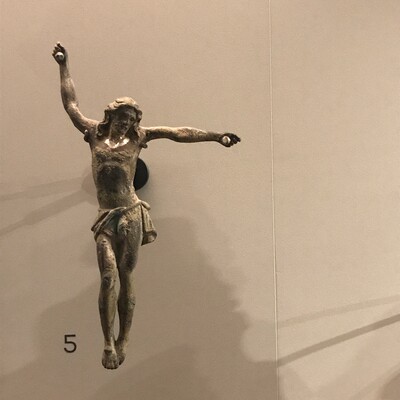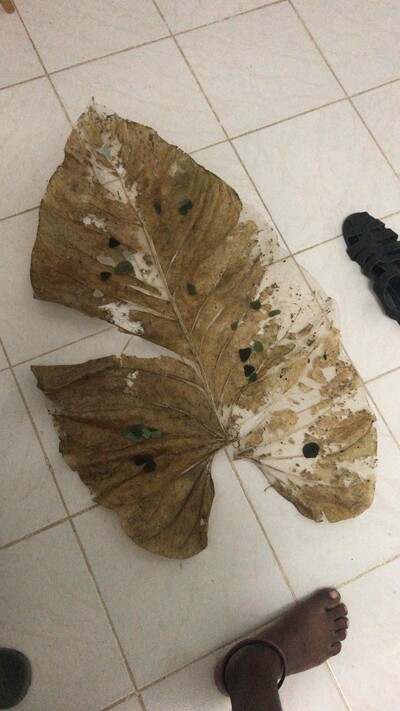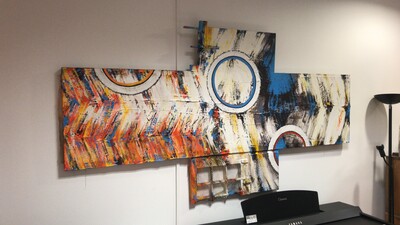I never know what is the happy end for my ideas
JULIEN CREUZET IN CONVERSATION WITH ANDRÁS SZÁNTÓ
AS: Tell me a few words about what transpired during your visits to Martinique?
I need to look back to the images of that journey. I arrived on July 15. I drank wake-up juice with water, sugar, ginger and lemon. I went with my brother to the Clement Foundation, where we made a visit of the garden and its sculptures. I visited my mother’s old house; I found trees there and put inside them a coral, which fused with the wood. I visited exhibitions about dance, about choreography. I spent time with my grandmother. I went to my favorite beach and walked by a river. It found a tarantula, but it disappeared. I picked all the flowers of different plants I could find, and made a collection of pictures about them.
I went to the Absalon waterfall, because, according to legend, Wilfredo Lam and André Breton went there, and it was there that Wilfredo Lam decided to make his monumental painting The Jungle (La Jungla), in 1943.
At the same time, I tried to make images of old cars that we could find on the street with my friends. We took many pictures. I also visited the most important library on the island. There, I saw an old painting by my father. I haven’t seen it in twenty years. During this visit, I found a painting of his depicting my brother and me.
I went to the museum devoted to the eruption of the volcano and discovered some beautiful objects. I met with the artist Ernest Breleur and the novelist Patrick Chamoseau, a friend of Edouard Glissant’s and the author of the 1992 book Texaco. I made several studio visits, including a garden of a designer, Jean-Marc Bullet, who makes experiments with the structure of gardens. I made experiments in movement by recording friends in the water. I showed three drawings made during this time on the platform of David Zwirner. I recorded many videos. One of them shows seaweed on the water and on the beach, the result of climate change.
You have had some major developments in your life and work in the past few months, including your work on behalf of the government to provide support to artists from your community.
It is strange for artists to help in the selection of other artists. Martinique has been a French department since 1946 and during this time we didn’t get to know artists from there. We don’t have French Caribbean artists inside French institutions. If I can shine a light on my communities, I think that’s a really important thing to do. It has allowed me to make studio visits and meet people and ask them to apply for government funds.
Meanwhile, you have elaborated a new phase of the journey, which will bring you to Munich. Tell me about it.
I am playing with the parameters of the journey. I wasn't able to accomplish everything I had originally set out to do in Martinique, partly because of the limitations imposed by Covid. I needed to adapt my initial proposal, to accept the realities of our moment. In any case, I prefer that people see me in Munich rather than in Martinique. To work on a project in Munich is also easier, in this moment, for everybody, including for the team.
According to the new plan, I will go directly to the home of BMW. I will visit the factory and the museum. While there, I can have more contact, more proximity to the team that is organizing this art journey. I think this is the most human part of this project, this collaboration. It will be even more interesting than going to Martinique, I think.
This brings us back to the creation of a structure made from an adapted car. And it would be an opportunity to work with members of the Caribbean diaspora.
I hope we can make it happen. My plan was always to adapt a car into a kind of canopy that could be carried around by dancers. It will be easier to do that if we have access to the factories and people who work for BMW. This is now the challenge of the team. Our goal is to bring dancers from the European Caribbean diaspora to create a performance in Germany. I will soon go to Munich to see what is there and to understand the situation in detail. I will bring a choreographer with me.
I am playing with the Afro diaspora as a concept. The idea is to write a story directly with the real story of the people. I want to think about how we can create a specific movement with bodies to create a memory of a journey, translated into dance.
What do you see in your mind’s eye when you imagine this performance?
I am not the type of person to do a sketch. I don’t try to print my ideas. My work is more about adapting to parameters and obstacles in real time. I decide to compose with the new parameters. I never know what is the happy end for my ideas.
For, now this project remains a series of discussions. The first step is to go to Munich. The second step is to see if there are resources to invite 5-6 people, and how much time we have to realize the project. I don’t have a specific idea in my head. I take it day-by-day.
The world has been pretty crazy these last few months. What else has been occupying your thoughts?
There are many things in my head. I need to do more meditation! I am dreaming the same dream: always trying to do my best.
For the future, I have many things in mind. I have started new conversations with philosophers and choreographers. I am working on a new 3D video where I will create anthropomorphic figures that will start to dance a very specific dance of Martinique. Each experience feeds into the next.
October 29, 2021








